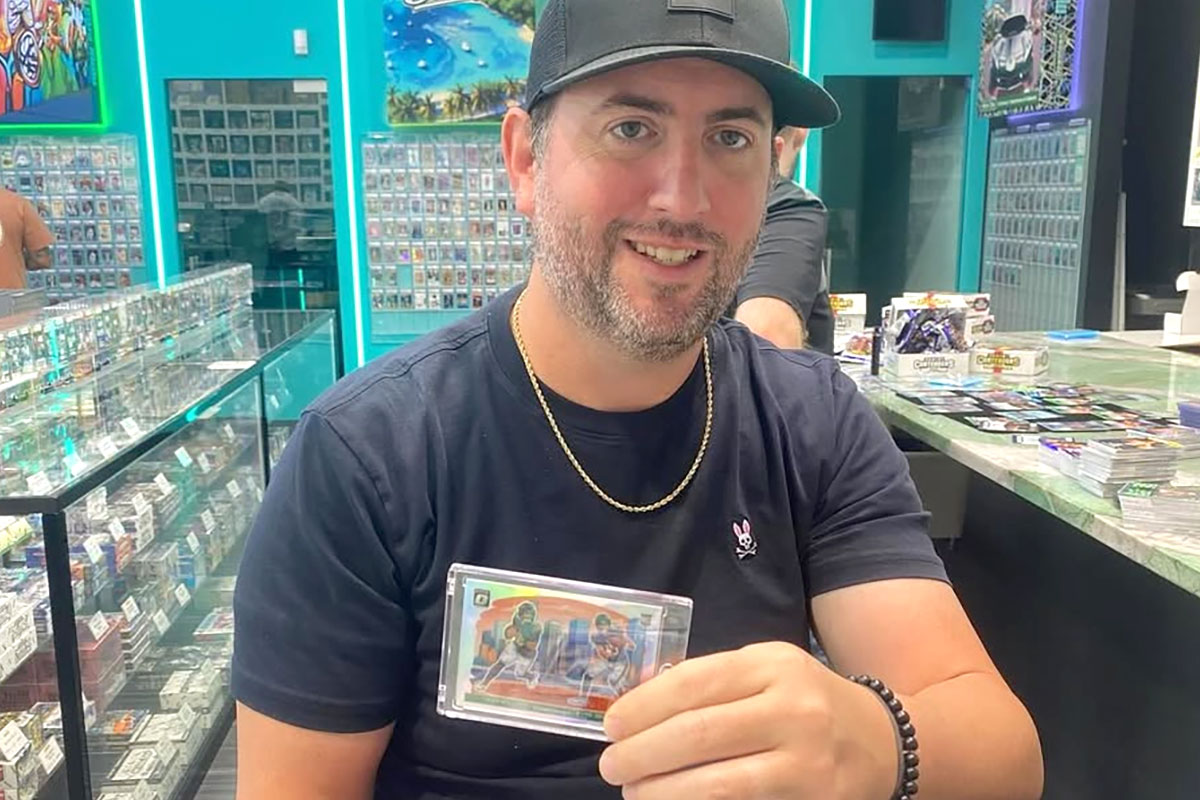What Is the Best Way to Sell Your Sports Cards?
How to identify the cards that have value and get the most bang for your buck.
Whether you’ve inherited a relative’s collection or are looking at your own, you might be wondering what the best way is to sell your sports cards. There are a few different ways to sell a sports card collection, and some require more research and preparation than others. Here’s everything you should know before you sell your sports cards, and what the best way is to get the most bang for your buck.
Identify the Cards and Estimate Value
Once you’ve decided to sell your sports cards, the first step is to identify what you have. Some cards are worth five figures while others are worth five cents. By identifying the cards that you intend to sell, you’ll be able to estimate their value.
One quick way to identify your cards is to check the most recent year for the statistics printed on the back of the card. For example, if the last year of statistics on the back of the card is 1966, it will be from the 1967 set. If the card doesn’t specify the year, do a quick search with the player’s name, card brand, and card number. You’ll usually be able to pull up the set and identify the card that way.
There are a few different sports card eras, and knowing which eras your cards were made in can give you an initial feel for potential value. Generally speaking, pre-war and vintage sports cards have the rarity and popularity that make cards valuable. Cards produced before 1948 are known as pre-war cards, and those produced between 1948 and 1979 are considered vintage. If you have cards from these eras, especially rookie cards or those from Hall of Famers, there’s a good chance they have some amount of value.
The condition of pre-war and vintage cards also plays a huge role in determining value. Because they are decades old, it’s common to have dull edges or corners, creases, or surface damage. Many pre-war and vintage cards also have print defects due to the inconsistent printing process and equipment of that era. More often than not, you’ll see these cards be wildly off-center or miscut. Although this was the fault of the manufacturer, these defects also factor into the overall condition of a card and thus impact its value.
The modern era for sports cards is considered to be any card from 1980 to 2011. There are some early modern cards that have value if they’re in mint condition, but copies in poor condition usually aren’t worth much.
Within the modern era is the junk wax era. Junk wax cards are those produced between 1986 and 1993. In the late 1980s and early 1990s, manufacturers flooded the market with endless copies of their cards. This overproduction saturated the market and left collectors with boxes of worthless cards. Unless you have pristine copies of specific sets, rare error cards, Michael Jordan’s 1987 Fleer rookie card, or Ken Griffey Jr.’s 1989 Upper Deck rookie card, your best option is to donate your junk wax cards. Collectors, dealers, and card stores are unlikely to buy junk wax cards.
After the boom and bust of the junk wax era, Topps and Upper Deck began manufacturing rarity by creating different versions of their cards. Refractors from 1993 Topps Finest were the hobby’s first parallels, and 1993 Upper Deck SP Foil rookie cards introduced short-prints. This new approach gave cards from the mid-to-late 1990s and early 2000s added value, some of which still hold up today.
If you’re looking to sell your sports cards that you’ve collected in recent years, you’re probably collecting ultra-modern cards. These are generally considered to be any card from 2012 or later. Values for ultra-modern cards fluctuate a lot, especially for current players. The greatest value for this era is in low-numbered parallels, rookie autographs, and rare inserts like Downtowns and Kabooms.
If you’re considering selling your modern or ultra-modern sports card collection, the condition of these cards also impacts their values. Professional grading companies will authenticate the card and assign it a grade (1-10) based on overall condition. The higher the grade, the more valuable the card will be.
Knowing which era your collection belongs to will help you decide which cards are worth selling and which aren’t. Skip the junk wax and instead focus on cards with value: pre-war, vintage, and specific modern and ultra-modern cards.
If you’re interested in finding exact values for specific cards in your collection, you’ll want to search for recent sales of the card. Apps like Alt can give you a value when you snap a picture of a graded card within their app. To find the value of an ungraded card, search for the card on eBay and filter by sold listings. This will give you a better idea of the actual value of your cards.
The Best Way to Sell Your Sports Cards
Most people don’t have the time to sift through every card in their collection, research values, and create listings online. The best and most convenient way to sell your sports cards is to work with a local card store that will buy your entire collection!
If you have a large vintage baseball collection, a bunch of Shohei Ohtani rookie cards, or a briefcase full of Downtowns and Kabooms, local card stores like AA Mint Cards will often buy your collection in bulk. We will assess your collection, determine the current market value, and make you an offer.
If you’re not sure what you have, we can help you identify any cards worth selling or help you maximize a card’s value by getting it graded. Whether you decide to sell your sports cards or not, you won’t regret working with a trusted name in the hobby.
Other Ways to Sell Your Card Collection
Another popular way to sell your sports cards is by listing them on eBay or other online marketplaces. Taking photos, creating a description, and filling out other required details takes a good amount of time and effort. You’ll also have to research prices for each card you want to list. If a card is priced too low, a savvy collector will snag it quickly. If it’s priced too high, it won’t ever sell.
If you don’t want to list your cards one by one, you can also try listing a handful of similar cards together. If you have a bunch of cards from one player or a specific team, you can create a single listing and sell them as a lot. This will help save time when you’re creating the listings as well as shipping them once they’re sold.
Besides selling your sports cards on eBay, you can also see if there are any card shows in your area. Card shows can be hit or miss, and you might have to deal with a bunch of low-ball offers before you find the right buyer.
Get a Competitive Offer and Sell Your Sports Cards in Minutes
Selling your sports card collection can be a time-consuming process, but it doesn’t have to be! If you don’t want to deal with the hassle of online marketplaces or local card shows, stop by AA Mint Cards to sell your sports cards. Our sports card experts will give you a competitive offer for your collection. Contact us for more information today!




